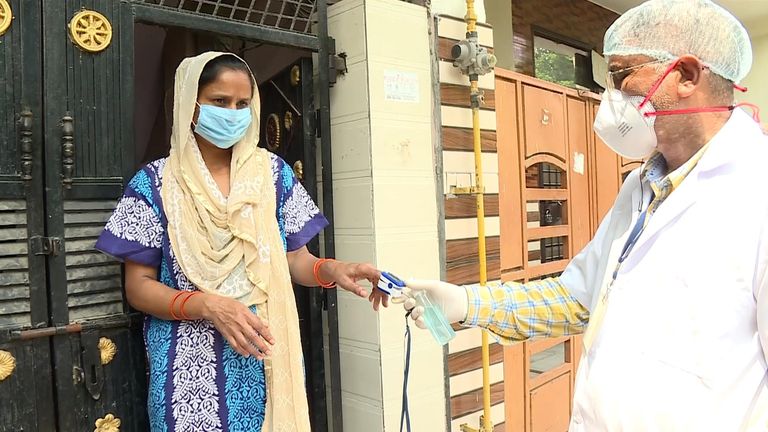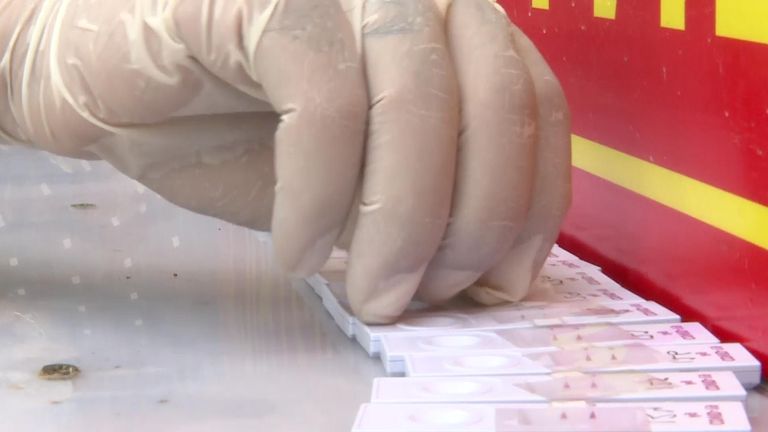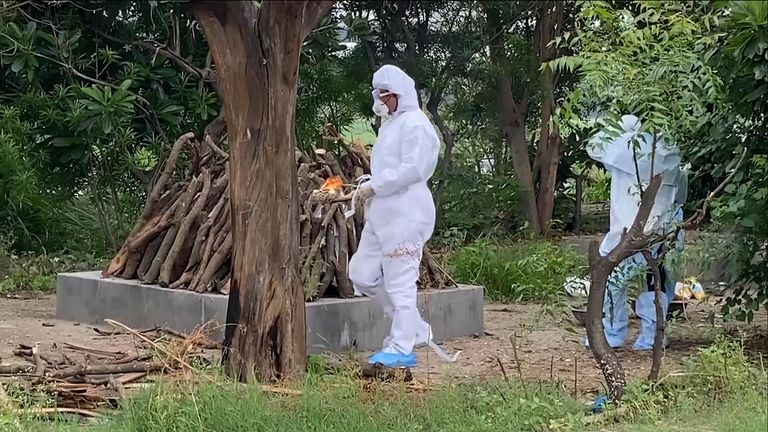India has surpassed Brazil to become the second-worst affected country in the world by the coronavirus pandemic.
A total of 90,802 new cases have been registered overnight, taking the total number of cases to 4,204,613.
It has taken just 13 days for India to go from three to four million cases, while it took Brazil 25 and the US 16 days.
With a daily record of new coronavirus cases, India has the highest infection rate anywhere in the world.
Less than a quarter of these cases are active and the recovery rate is more than 77%, according to the Indian health ministry.
Though the fatality rate may be low at 1.7% – one of the lowest rates in the world – more than 70,000 people have succumbed to the virus so far.
It is not known why the fatality rate is so low, although experts have pointed to India’s younger population, a potentially less virulent strain of COVID-19, strong immune systems and the country’s high heat levels as potential reasons.
The government has ramped up its testing capabilities with over a million tests every day, which is one reason for the spike in daily cases.
But the concern is over large numbers of cases showing up in smaller towns, cities and rural India.
Dr Harendra Kushwaha is in charge of the COVID-19 rapid response team in Indirapuram, Ghaziabad.
His team are overseeing two blocks of Makanpur and Kinauni that comprise of nearly 200,000 people, screening and surveying those living in vulnerable areas – a task that is overwhelming for his 80-strong group.
Dr Kushwaha told Sky News: “These are corona warriors who are risking their lives meeting COVID-19 patients and their families.
“People don’t know if they are carrying the virus and may spread it indiscriminately. We have to break the chain.”
We followed the team in one of the residential areas where they met family members of coronavirus patients who are home quarantined.
Armed with thermometers, oximeters, sanitisers and medicines, they went about checking the vital statistics of those living in a 100m radius of a case.
Resident Anand Dubey said: “We are all very troubled by the virus. These teams are spreading awareness and alerting people by coming to our homes. It’s very important and makes a big difference.”
India’s public health care system is woefully inadequate and its infrastructure creaking.
For decades, successive governments have spent just over 1% of the GDP on public health care.
Two-thirds of the population rely on private medical care, which is expensive. An illness can wipe out savings and push families into poverty.
The poor are most vulnerable and in these hard times the pandemic has made life even tougher.
For those working in the informal sector, who make up almost 80% of the country’s working population, to have a test at a hospital could mean missing a day’s work.
This is where free mobile test clinics are vital.
One is run by Dr Sunil Minj, whose rapid antigen test mobile clinic goes to patients.
With the help of two laboratory technicians, they test close to 400 people a day in slums, markets and construction sites in Delhi.
Dr Minj told Sky News: “With the [lockdown easing], migrants are coming back and they inadvertently carry the virus.
“They live in close proximity and are reluctant to test for fear of being quarantined for 14 days, which also means a loss of livelihood.”
India had one of the severest lockdowns for months.
But now with a gradual unlocking, life is almost back to normal.
This is one of the reasons for the country’s record number of daily cases. In the last week, an average of 1,000 deaths were reported every day.
It is an ominous sign for the country, as the trajectory of the virus is on an upward trend with no signs of relenting.
At the Hindon crematorium, a family gathered far away from the pyre of the 53-year-old woman who died of COVID-19.
Only a family member in a PPE suit was allowed to conduct the last rite.
A suitable Hindu ritual which would have been indispensable to the grieving family was hurried and lacking.
COVID-19 has deprived everyone in life and in death.






